Pre-scheduled B2B meetings that matter. Wabel Summits connect buyers and suppliers to unlock new deals in Dubai and London.









 France
Red Wine
Brand
France
Red Wine
Brand

The Lieu-dit is a group of small parcels of unique vines. Because of its territorial, cadastral and historical unity, it constitutes a unique terroir... The alchemy between its soil, its relief, its orientation, its climate and its grape variety, gives rise to Protected Designation of Origin wines of exceptional typicity and style. The respect of the terroir combined with the know-how of passionate winegrowers allows the best wines to be extracted.
THE STORY A legacy of the past, the "Clos de Pérou" vineyard has a history that is forever attached to it. The history of this place depends on that of the village of Turquant which lived essentially from wine growing until 1880, when phylloxera destroyed the vineyard. The vine was replanted with rootstock but it took about ten years for it to return to its former glory. In order to survive, the winegrowers needed a complementary activity, so they invented the "pomme tapée". By taking the ferry, they went to get the fresh apples north of the Loire and prepared them in the underground ovens of the village. Today, only one craftsman makes the "pomme tapée", but the vine still provides a living for many passionate winegrowers.
LOCATION Surrounded by high walls, the Clos de Pérou is located near the village of Turquant, on the edge of a plateau, on the steep cliff that borders the left bank of the Loire (altitude between 50 and 75 metres).
TERROIR This Lieu-dit is only developed on tuffeau stone (upper Turonian chalk). The soils developed are mostly deep, clayey. There is a significant area of thin soil where the chalk is usually less than 60 cm deep and provides a moderate but relatively constant supply of water, which is conducive to quality viticulture. The parcel benefits from a wide opening onto the Loire, and the Atlantic influences coming up the valley are clearly felt. The microclimate is mild and temperate. Total surface area of the parcels: 5 ha
IN THE VINEYARD In the middle of an area with a temperate oceanic climate, the Saumur Champigny PDO zone has a particularly hot microclimate in summer, hence the name of this appellation which comes from the Latin "campus igni" or field of fire. The use of prophylactic methods (disbudding, leaf removal) in order to favour the natural aeration of the stocks and to regulate the load; then, of reasoned cultivation in order to allow the most natural fight against cryptogamic diseases.
VINIFICATION The harvest begins after checking the ripeness and health of the grapes. - Total de-stemming of the harvest. - Fermentation in thermo-regulated stainless steel vats, between 26 and 28°C. - Light daily pumping over during the first third of the alcoholic fermentation, as well as a fairly long maceration to extract the full potential of the grapes. - Malolactic fermentation in our cellars at a depth of 25 m.
AGEING Isolated in one of the galleries, the wine continues its maturation in a quiet environment, protected from light and temperature variations for 6 to 10 months before bottling.
SERVING Enjoy this wine slightly chilled (12 to 14°C).
TASTING NOTES Deep ruby colour with purple tints. Open nose, with notes of spices (black pepper), dried fruit (almond) and black fruit (cherry). Frank attack. Powerful palate with coated tannins. Persistent finish with liquorice notes.
FOOD PAIRING Enjoy this wine with grilled, roasted or stewed meats such as beef cheek with beer.



 France
Red Wine
Brand
France
Red Wine
Brand

The hamlet is a group of small parcels of unique vines. Due to its territorial, cadastral and historical unity, it constitutes a unique terroir...
THE STORY A legacy of the past, the hamlet "Les Poyeux" has a history that is forever attached to it. Mentioned as early as 1802, among the first growths of the Saumur region, the hamlet "Les Poyeux" is considered as a reference terroir: "the gold mine".
LOCATION The hamlet "Les Poyeux" belongs to the commune of Chacé, a small village located in the Saumur region. This hamlet is one of the most renowned areas in the region for the production of AOP Saumur Champigny, whose wines are characterised by a unique smoothness and concentration.
TERROIR The hamlet "Les Poyeux" is mainly developed on tuffeau stone (sandy-glaucous chalk from the Middle Turonian). The soils are mostly shallow. The soft chalk is usually less than 60 cm deep and provides a moderate but relatively constant water supply, which is conducive to quality winegrowing.
IN THE VINEYARD Use of prophylactic methods (disbudding, leaf removal) in order to favour the natural aeration of the stocks and to regulate the load; then, of reasoned cultivation in order to allow the most natural fight against cryptogamic diseases.
VINIFICATION The harvest begins after checking the ripeness and health of the grapes at the beginning of October.
AGEING Isolated in one of the galleries, the wine continues its maturation in a quiet environment, protected from light and temperature variations for 6 to 10 months before bottling.
SERVING Serving temperature: 12-14°C.
TASTING NOTES Very intense black colour with purple tints. Elegant nose offering a wide range of aromas from fresh red fruits (raspberry) to ripe black fruits (blackcurrant, blackberry). A hint of empyreumatic (toasted) and spicy (grey pepper) aromas. The attack is supple. Fleshy mouth, structured by coated tannins. Nice volume. Fresh finish (fresh mint), with character.
FOOD PAIRING This wine will be particularly appreciated with grilled or roasted red meats, roast poultry dishes in sauce (turkey with chanterelles) or leg of lamb.



 Hungary
White Wine
Private Label
Hungary
White Wine
Private Label

Pure Olaszrizling full of minerality, quince and almond notes on the palate.



 Hungary
White Wine
Private Label
Hungary
White Wine
Private Label

So far, it is the only wine of this variety we have. It was harvested from the west side of Somló, from the chapel of St. Ilona. It has only been aged in tanks. It is austere, with good acidity and elegance.



 Hungary
Other Sparkling Wines
Brand
Hungary
Other Sparkling Wines
Brand
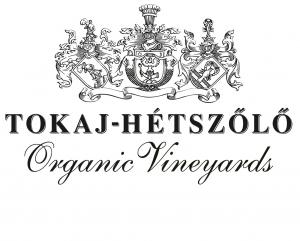
This is the first sparkling wine in the history of Tokaj-Hétszőlő Vineyards. It comes from the 2019 vintage, and was made from Furmint grape variety. The disgorgement took place after one year of bottle aging. It is an elegant, complex wine with nice acidity. Cheers!



 France
Red Wine
Brand
France
Red Wine
Brand

TERROIR Situated on plots of land at an altitude of between 50 and 105 metres, and on hard Jurassic limestone soils, the vineyard of the "Ecclesia" cuvée is one of the best terroirs of this Saumur Puy Notre Dame appellation. The fine selection of grapes by berry tasting and the specific terroir of this cuvée give it structure, power and elegance.
VINIFICATION Selection of grapes in the vineyard by berry tasting. Traditional vinification. Destemming of the harvest, long maceration and gentle extraction.
SERVING Serve between 14-16°C.
TASTING NOTES Deep colour with purple tints. This wine has a powerful, complex nose, dominated by notes of black fruit (cherry, blackcurrant, blackberry), chocolate and spices. The palate is fleshy and powerful, opening with firm, coated tannins. Persistent finish with notes of kirch cherry.
FOOD PAIRING It goes well with fish in sauce, roasted poultry, grilled meat and red meat.



 France
Red Wine
Brand
France
Red Wine
Brand

The Lieu-dit is a group of small parcels of unique vines. Because of its territorial, cadastral and historical unity, it constitutes a unique terroir... The alchemy between its soil, its relief, its orientation, its climate and its grape variety, gives birth to Appellation d'Origine Contrôlée wines of exceptional typicity and style. The respect of the terroir combined with the know-how of passionate winegrowers allows the best wines to be extracted.
THE STORY A legacy of the past, the Lieu-Dit "Beauregard" has its own history that is forever attached to it. The Lieu-dit "Beauregard" is located in the commune of Restigné in the heart of the Bourgueil appellation. Vines have been planted here since Roman times, but its reputation is linked to that of Bourgueil Abbey, founded around 990 by Benedictine monks who, under the leadership of Abbot Baudry, knew how to extract the quintessence of their vines.
LOCATION The Lieu-dit "Beauregard" is part of the commune of Restigné. It is located near an ancient road: "le grand chemin", which linked Touraine to the Ocean, via Anjou.
TERROIR The plots of land of the Lieu-dit "Beauregard" are located in a small valley with a slight slope. The vines, facing south, benefit from maximum sunshine. The Loire valley is about ten kilometres wide and was, a long time ago, a vast estuary covered by the sea. This results in a variety of soils. In the "Beauregard" area, the subsoil is clayey and relatively deep. On the surface, this soil contains a large quantity of small flints, gravels and pebbles: the gravels (ancient alluvium of the Loire) on a sandy horizon. This terroir allows the vines to establish themselves well thanks to the characteristics of its subsoil and favours rapid warming of the vines thanks to its surface composition. The vines therefore show good precocity. The climate is temperate. On the edges of the valleys, the soil heats up quickly under the oceanic influence which penetrates to the heart of the vineyard. Total surface area of the plots: 3 ha
IN THE VINEYARD Use of prophylactic methods (disbudding, leaf removal) in order to favour the natural aeration of the stocks and to regulate the load; then, of reasoned cultivation in order to allow the most natural fight against cryptogamic diseases.
VINIFICATION The harvest begins after checking the ripeness and health of the grapes on October 10th. - Total de-stemming of the harvest. - Fermentation in thermo-regulated stainless steel vats at 25°C. - Daily light pumping over and punching down of the cap allow a good extraction of the polyphenolic potential. Long maceration (15 days).
AGEING After malolactic fermentation, the wines continue to mature in the coolness of our ageing cellar.
SERVING Serving temperature: 12-14°C.
TASTING NOTES Intense ruby colour. Very expressive and complex nose combining aromas of ripe red fruit (cherry), black fruit (blackcurrant, blackberry), violet and pepper. Ample and supple attack. Well-balanced palate with a nice tannic structure. Persistent finish on the fruit.
FOOD PAIRING This red wine is the ideal companion for grilled or roasted red meat, small game dishes, roast poultry in sauce such as turkey with cranberries.



 France
White Wine
Brand
France
White Wine
Brand

The Lieu-dit is a group of small parcels of unique vines. Because of its territorial, cadastral and historical unity, it constitutes a unique terroir... The alchemy between its soil, its relief, its orientation, its climate and its grape variety, gives birth to Protected Designation of Origin wines of exceptional typicity and style. The respect of the terroir combined with the know-how of passionate winegrowers allows the best wines to be extracted.
THE STORY
In the 4th century, the birth of the vineyard is linked to the foundation of the monastery of Marmoutier by Saint Martin in 372. In the 14th century, some of the Vouvray vintages belonged to the French crown and featured prominently at the king's table.
The Chenin blanc grape variety, also known as Pineau de la Loire, originates from the Loire Valley and was called "plant d'Anjou" around the 10th century. It was Rabelais who popularised its current name in the 16th century.
History: A legacy of the past, the "Fosses d'Hareng" locality has its own history which is forever attached to it. The origin of the locality comes from a joke made by vineyard workers. When it was very cold, in this small valley with gentle slopes, the rows of frozen vines, stripped of their leaves, reminded them of the skeleton of a "pesquid". Remembering that in the Middle Ages, in their region, during Lent, people ate herring, the only fish allowed because it was not fatty, they named this place: "Les Fosses d'Hareng".
LOCATION The Lieu-dit "Les Fosses d'Hareng" is located in Vouvray, a commune in the Loire Valley which is a UNESCO World Heritage Site.
TERROIR The plots are situated in the hollow of a valley and face east-west. On the edge of the valleys, the climate is temperate and the soil warms up quickly under the oceanic influence that penetrates to the heart of the vineyard. The perruche soil is rich in siliceous elements (pebbles) on the surface and in the soil. It has a sandy-clay texture on a limestone parent rock. This combination brings fruitiness and roundness to the wine. Total surface area of the plots: 6.3 ha
IN THE VINEYARD La récolte débute après contrôle de maturité et de l’état sanitaire des raisins début octobre.Utilisation de méthodes prophylactiques (ébourgeonnage, effeuillage) afin de favoriser l’aération naturelle des souches et de réguler la charge ; puis, de culture raisonnée afin de permettre une lutte la plus naturelle contre les maladies cryptogamiques.
VINIFICATION
- Pneumatic pressing with separation of the first drained juice. - Cold settling for 24 hours. - Vinification at low temperature to favour the finesse of the aromas. - The alcoholic fermentation is stopped by cold mutage to preserve residual sugars.
AGEING Racking and maturing on fine lees for about 6 months before bottling.
SERVING Serve between 10-12°C.
TASTING NOTES Straw yellow colour. This semi-dry wine has an intense and complex nose, combining lime blossom, citrus fruits (grapefruit, lemon) and ripe fruits (pineapple). Lively attack. Voluminous, rich mouth, marked by notes of candied fruits. The slightly acidic finish reinforces the impression of freshness.
FOOD PAIRING This semi-dry wine goes very well with aperitifs, local charcuterie, roast poultry or poultry in sauce such as duck with peaches, blue-veined cheeses and goat's cheeses, sour tarts (apricot, lemon).



 France
White Wine
Brand
France
White Wine
Brand

THE STORY Hugues Brochard, who represents the fourth generation of winegrowers on the domaine, works his vineyards with great pride and character. At the start of the 2000s, the diversity ad dispositions of the soils of the Nantes wine region led to the emergence of the concept of Muscadet as an expression of the excellence of the terroir. Today, the INAO recognises the Clisson cru. "La Petite Venise", which sits on a granite fault of the old Armorican massif.
LOCATION The vines grow on the south-facing slopes of the Sèvre and Maine rivers in the commune of Maisdon sur Sèvre on the southernmost part of Armorican Massif.
TERROIR The Cru Clisson's vines are over 40 years old. This plot of vines, covering an area of one hectare, thrives in a soil of clay combined with smooth pebbles on a granite beddrock, whose good drainage qualities endow the wine with superb minerality.
VINIFICATION The grapes of natural richness, picked by hand, undergo a traditionnal vinification process.
AGEING At least two years' ageing on the lees helps make this an outstanding wine combining aromatic complexity, fleshiness and elegance.
SERVING Serve lightly chilled (12-13°C). Decant two hours before drinking to better appreciate the aromas.
TASTING NOTES Golden hue. Complex nose with a blend of candied citrus fruit, yellow-fleshed (greengages), pastry and empyreumatic notes (smoky). Lovely minerality. Distinctive on the palate which shows a lovely balance of acidity and fat. Fleshy and long-lingering on the mid-palate with a mouth-watering, saline finish.
FOOD PAIRING Enjoy with fish in a sauce (pike-perch with white butter) or grilled fish (sea bass), sea scallops with leeks, white meats, mature cheeses (Beaufort, Swiss Gruyère).



 France
Red Wine
Brand
France
Red Wine
Brand

Let's take advantage of this stopover to linger in the Saumur region and discover an exceptional Saumur Champigny. Guillaume Le Lay cultivates 4 hectares of vines in a closed area surrounded by tufa walls which protect the wine from the east winds and allow the grapes to ripen very well. The wine is matured in barrels in underground cellars 25 metres below ground level, resulting in a concentrated, rich and complex wine.
THE STORY The wines of these properties, marked by the tradition and authenticity of their production, are the ambassadors of their appellations.
LOCATION Located in the south of the Loire, within 3 different Clos (Clos de la Varenne, Clos Dovalle and Clos de la Crilloire), the vineyard is situated in the commune of Bellevigne-les-Châteaux and Brezé.
TERROIR Château du Bellay is made from 50 year old vines. They grow on a clay-limestone soil. The excellent potential of these most beautiful plots allows a beautiful maturation of the grapes.
VINIFICATION Selection of the best plots. Control of the maturity. Tasting of the grapes. The grapes are carefully picked on a sorting table. Fermentation in temperature-controlled stainless steel vats (22°C), long maceration of 30 days with gentle extraction of polyphenols.
AGEING Aged for 12 months in French oak barrels, in galleries dug in limestone tuff, protected from light and temperature variations. Then bottled and aged for a further 12 months.
SERVING Serve at room temperature (16°C).
TASTING NOTES Dark red colour. The nose seduces with its aromas of black fruits, truffles and hazelnuts, with delicate notes of roasting. On the palate, this red wine is harmonious and well balanced with silky tannins. Elegant and long finish with hints of chocolate.
FOOD PAIRING This lovely Cabernet Franc wine is a delight with grilled and roasted meats, fish or mature cheeses.



 France
Red Wine
Brand
France
Red Wine
Brand

THE STORY Maître Cornélius is the name of a book written by Honoré de Balzac in 1831, in which the wine of Bourgueil is praised. Balzac is one of the most famous French authors from the first part of the 19th century. Novelist, playwright, literary critic, art critic, essayist, journalist, and printer, he left behind one of the most impressive series of novels ever written in French.
TERROIR The Cuvée Cornélius 1831 is made from superb hundred years-old vines on tuffeau. The wine is carefully aged in oak barrels. This Bourgueil is full of fruit, with liquorice flavours and a solid structure.
VINIFICATION Traditional winemaking and long (3 weeks) maceration with gentle pigeage (punching down the cap).
AGEING Aged for 12 months in oak barrels.
TASTING NOTES Dark colour with purplish highlights. Nose of spice, caraway seed, black pepper and mint along with stewed fruit, fruit in brandy, and subtle toasty nuances. Warm and generous on the palate with forest floor and violet flavours balanced by rich, characterful tannin. Fresh finish with liquorice overtones.
FOOD PAIRING Served at cool room temperature (14-16°C) with beef cheek, venison fillet, wild boar casserole, tajines, etc.



 France
Red Wine
Brand
France
Red Wine
Brand

Let's get back on the road and cross the Loire. A few kilometres further south is Chinon and its royal fortress. Overlooking the town is a magnificent five-hectare vineyard surrounded by white tufa stone walls. The old vines grow on a sandy and crumbly limestone soil that allows the soil to warm up quickly and the grapes to ripen very well. Clos de la Lysardière is an intense, powerful and fruity wine.
LOCATION Magnificent five-hectare vineyard overlooking the town of Chinon and set in white tufa stone walls.
TERROIR Its terroir (sandy soil on crumbly limestone) allows a very rapid warming of the soil and favours a very high maturity of the grapes. The old vines are selected on the plateau at the top of the hillside, overlooking the Vienne, on a beautiful southern exposure. The intense fruitiness and smooth tannins are powerful enough to stand up to a pie or well-prepared small game. A gourmet nugget in the land of Rabelais.
VINIFICATION Careful harvesting of grapes picked at very good maturity. Traditional vinification with moderate extraction of tannins. Pumping over at the beginning of fermentation.
AGEING Aged for eight months using oxygen to gently open the wine and round out the tannins before bottling.
SERVING Served at room temperature (14-16°C).
TASTING NOTES Dark colour with purple tints. The powerful nose seduces with its notes of juicy black fruits (blackcurrant, cherry, blackberry), cooked fruits (plum), tobacco and spices (black pepper). The palate is ample, structured and full of flesh, balanced by its robust tannins. Powerful black cherry finish.
FOOD PAIRING To be served with fish in sauce (pike-perch or lamprey), grilled meats (beef ribs, mitts, rack of lamb), small game (hare à la royale).



 France
White Wine
Brand
France
White Wine
Brand

Our journey now continues in Touraine and more exactly in Vouvray. The Vobridius cuvée refers to the first name given to the commune, which appears in writings from the end of the 8th century. The result of the collaboration between two passionate winegrowers, Philippe Brisebarre and Laurent Kraft, this Chenin blanc was developed to reflect the expression of the Vouvray terroir as faithfully as possible.
LOCATION A cuvée composed of the association of three superb plots located on the plateau of the commune of Vouvray. These vines are known for their ability to over-ripen and produce naturally rich grapes.
In THE VINEYARD Harvest with ripe and candied fruit profiles.
VINIFICATION Skin maceration to extract all the aromatic potential of the grapes. Traditional fermentation (between 18 and 20°C).
AGEING Aged in oak barrels for one year, with regular resuspension of the lees. Bottled in September.
SERVING Serve at 12°C.
TASTING NOTES Golden colour. Complex nose combining ripe yellow fruits (quetsche) and empyreumatic notes (brioche, caramel). The palate is persistent, ample and structured, carried by a harmonious balance of acid and fat. Persistent finish with spicy notes (sweet vanilla).
FOOD PAIRING To accompany river fish (pike-perch), poulard with cream sauce, Beuchelle à la tourangelle (sweetbreads, kidney, cream mushrooms), andouillettes au feu de bois or mature goat cheese.



 France
Red Wine
Brand
France
Red Wine
Brand

Let's get off the beaten track and take the side roads to venture to Vendôme. Along the Loir, Nicolas Parmentier, a committed winemaker, perpetuates the tradition of Pineau d'Aunis, specific to the Vendôme region. Made from this confidential grape variety, the Grillé d'Aunis cuvée is distinguished by its originality and generosity. A little nugget to discover.
LOCATION The slopes exposed to the rising sun, on the banks of the Loir, allow for good precocity. The plots of land that are more than 50 years old are protected from the north and benefit from a favourable microclimate thanks to the Loir.
TERROIR The soil, composed of clay (20%), has a large quantity of small pink flints on the surface and rests on a Turonian limestone parent rock. This soil provides a good water supply and good drainage.
VINIFICATION Vinification in 1000l vats, vatting time of more than 14 days, at a controlled temperature of 22°C; traditional hand punching of the cap for ideal extraction, vinification of pure Pineau d'Aunis grapes.
SERVING Serve at room temperature, 14-16°C.
TASTING NOTES Intense red colour, clear and brilliant. Nose: a fresh bouquet, exalting aromas of strawberry and black berries, a spicy, slightly liquorice background, with a hint of roasted notes and black pepper. Palate: The mouth is round and warm. The tannins are silky and smooth, with a hint of redcurrant, spice, ginger and black pepper on the finish. Well balanced with a fresh attack.
FOOD PAIRING Wine to be enjoyed with cold meats, pork ribs, rabbit with olives, seven-hour leg of lamb or mature goat's cheese.



 France
White Wine
Brand
France
White Wine
Brand

Let's now head for one of the most beautiful châteaux in the Loire Valley: Chenonceau. The TBK cuvée pays tribute to Thomas Bohier and his wife Katerine, founders of this architectural nugget spanning the Cher, by using their monogram which adorns some of the castle's ceilings. The winemaker Jérôme Marquet offers us a refined gastronomic wine with a strong structure.
LOCATION The vines are located on the right bank of the Cher on a south-facing slope. The microclimate of the plot is characterised by a very good light, regular ventilation and low rainfall.
TERROIR The terroir is composed of flinty clay of the perruche type, which allows the Sauvignon grape variety to ripen very well. Controlled pruning and yields naturally limited to 55 hl/ha naturally contribute to the identity of this superb cuvée, characterised by its ripe fruit aromas and its strong structure.
VINIFICATION Monitoring of ripeness by regular tasting of the berries. Harvesting with ripe to candied fruit profiles. Gentle pressing and light settling to preserve the aromatic potential. Cold stabilisation (5 days). Traditional vinification with temperature control (17 to 19°C).
AGEING Aged on fine lees with regular batonnage (6 to 8 months minimum), bottled in June.
SERVING Serve chilled (10°C).
TASTING NOTES Straw yellow colour. The nose seduces with its scent of candied citrus fruit, juicy pear, ripe apricot and blackcurrant buds. The palate is full, fleshy and superbly balanced by its acidic structure. The finish is persistent with fresh menthol notes.
FOOD PAIRING Serve as an aperitif or with fish in sauce (monkfish or pike-perch with sorrel), scallops, roasted white meats, mature goat's cheese.



 France
White Wine
Brand
France
White Wine
Brand

Our journey is coming to an end. Let's discover a last wine on the borders of Touraine, at Willy Allion's, a young passionate winegrower in the commune of Saint Romain sur Cher. La Dilecta, named after Honoré de Balzac's first love, Mme de Berny, is an exceptional wine that magnifies the expression of Sauvignon Blanc grown to a very high level of maturity. This wine, which exudes candied fruit, combines aromatic power and elegance.
TERROIR The grapes are harvested from two plots of old vines located on the slopes of the Cher on a clay-limestone terroir and selected for their superb aptitude for maturation.
VINIFICATION Monitoring of ripeness by regular berry tasting. Grapes are harvested with ripe fruit aromatic profiles. skin-contact maceration for 12 hours, then gentle pressing and light settling to preserve the aromatic potential. Traditional vinification with temperature control (17 to 19°C).
AGEING Aged on fine lees with regular stirring (8 to 10 months) before bottling in July.
SERVING Served slightly chilled (12-14°C).
TASTING NOTES Golden colour. Exuberant nose combining spices, candied citrus fruits, exotic fruits (pineapple, mango), empyreumatic notes (toast) and a subtle minerality. Fleshy, voluminous and warm on the palate, well balanced between sweetness and freshness. Powerful, unctuous and salivating finish, with toasted notes.
FOOD PAIRING To be enjoyed with fish in sauce or grilled (sea bass), white meat (Bresse hen in cream sauce), pan-fried foie gras, as well as mature goat cheese.



 France
Other Sparkling Wines
Brand
France
Other Sparkling Wines
Brand

THE STORY A selection of the best juices during pressing and a long maturing period of at least 48 months on laths give this cuvée elegance, complexity and character.
LOCATION The parcels selected for the Cuvée "Rendez-Vous" are located in the commune of Vouvray on the limestone plateau overlooking the Loire.
VINIFICATION Gentle pressing and fermentation at a cool temperature (18°C) to preserve the aromas. Selection of press hearts.
AGEING Aging of the base wines in barrels (10% of the cuvée) bringing a nice complexity. Second fermentation in bottle according to the Traditional Method. The minimum 48 months of storage on laths before disgorging brings an incomparable finesse of bubbles.
SERVING To be enjoyed chilled (8-10°C).
TASTINGS NOTES Golden yellow colour with an elegant and fine effervescence. The mineral nose opens with notes of quince and toast, and is enhanced by light mentholated notes. The palate has a smooth attack and a good balance between volume and freshness. Beautiful aromatic persistence on notes of candied fruits.
FOOD PAIRING To be enjoyed from the aperitif to the dessert with a tuna steak snacked with cumin, a chicken with morels or with a rhubarb and apricot crumble.



 France
White Wine
Brand
France
White Wine
Brand

THE STORY Wines subtly blended by our cellar masters to reflect their personality, sensitivity, and creativity.
THE VINTAGE High Environmental Value from the 2020 vintage
TERROIR The grapes come from late-ripening terroirs (gabbro, granite, and gneiss) that confer beautiful structure.
VINIFICATION Skin contact for a third of the crop, which brings out the grapes' fresh fruitiness. Very soft pressing and light must racking. Slow, temperature-controlled fermentation (20°C) enhances the development of aromas. Part of the blend undergoes malolactic fermentation to increase richness.
AGEING Long ageing on the lees (minimum 6 months) with regular bâtonnage (stirring with a stick) that enhances the wine's richness).
SERVING You can enjoy this wine chilled (10-12°C).
TASTING NOTES Pale golden colour with silver highlights. A harmonious bouquet of ripe white fruit (pear), tropical fruit (pineapple), and empyreumatic nuances (caramel). Ripe, round, and with plenty of body on the palate. The underlying vivaciousness adds freshness. Long aftertaste with subtle minerality.
FOOD PAIRING You can enjoy this wine as an aperitif or with shellfish, seafood, or fish in a sauce.



 France
White Wine
Brand
France
White Wine
Brand

THE STORY Wines subtly blended by our cellar masters to reflect their personality, sensitivity, and creativity.
THE VINTAGE High Environmental Value from the 2021 vintage
TERROIR Sologne sand on clay and limestone.
VINIFICATION The grapes are picked when they achieve optimum aromatic potential and a fresh, fruity taste profile. Grapes from each plot are fermented separately to bring out and enhance their intrinsic organoleptic qualities. The must undergoes refrigeration prior to fermentation. Furthermore, inert nitrogen gas is used to retain fresh fruit, contribute aromatic intensity, and confer hints of citrus and blackcurrant.
AGEING Skin contact and ageing on the lees for a ripe fruit taste profile as well as richness and hints of tropical fruit. Subtle blending brings out beautiful aromatic complexity.
SERVING Best served well-chilled (10-12°C).
TASTING NOTES Beautifully brilliant pale yellow colour. The nose has a remarkable range of fresh (citrus, blackcurrant buds) and ripe (lychee, mango) aromas, as well as subtle floral (rose) overtones. Round, full-bodied, and well-balanced on the palate, underpinned by good acidity and a very long aftertaste.
FOOD PAIRING Best served with fish and seafood, savoury tarts, sweet-and-sour dishes, or simply as an aperitif. Suggested dish: baked gilt-head bream in a vanilla sauce.



 France
White Wine
Brand
France
White Wine
Brand

THE STORY Wines subtly blended by our cellar masters to reflect their personality, sensitivity, and creativity.
THE VINTAGE High Environmental Value from the 2021 vintage
TERROIR Clay limestone.
VINIFICATION Winemaking techniques : The grapes are picked when perfectly ripe, with optimum fruity aromas. Cold settling with low turbidity. The deposit from the must is filtered and reincorporated to add richness and complexity. Temperature-controlled fermentation (17-19°C) with the use of nitrogen gas to retain Chenin Blanc's full aromatic potential.
AGEING Ageing on the lees for 7 to 8 months.
SERVING Served chilled (10-12°C).
TASTING NOTES Pale yellow with green highlights. Very attractive and intense on the nose with hints of vine peaches and lemon zest. Quite fresh on the palate from the very first, going on to show considerable smoothness as well as delicate lemon and menthol nuances on the aftertaste.
FOOD PAIRING This wine is the perfect accompaniment to fish and seafood dishes, mixed salads, curry, etc.



 France
Rose Wine
Brand
France
Rose Wine
Brand

THE STORY Wines subtly blended by our cellar masters to reflect their personality, sensitivity, and creativity.
THE VINTAGE High Environmental Value since the 2020 vintage
TERROIR Clay-limestone on tufa.
VINIFICATION The grapes are picked when they achieve optimum ripeness and a full, fruity taste profile. Cold settling with low turbidity. Deposit from the must is filtered and reincorporated to add richness and complexity. Temperature-controlled fermentation (17-19°C) to retain Cabernet Franc's full aromatic potential.
AGEING Aged of 5 months on the lees.
SERVING Served chilled (8-10°C).
TASTING NOTES Attractive pale pink colour with brilliant highlights. Exuberant, deliciously fruity nose displaying charming pink grapefruit, strawberry, and peach overtones. Well-balanced and tasty on the palate. Fresh and round with delicate hints of red fruit.
FOOD PAIRING This wine is the perfect accompaniment to fish, mixed salads, Asian food, and fruit salads.



 France
Rose Wine
Brand
France
Rose Wine
Brand

THE STORY
Fabien HACHET, cellar master at the Cave de Saumur : "Son and brother of Muscadet winegrowers, I was born in 1981 in Nantes. Initially oriented towards studies in Biology and Chemistry, my motivation to become an oenologist was confirmed after a stay in Givry in 1997 (Burgundy). I did my graduate studies in Viticulture and Oenology. Passionate about traveling and aware of the diversity of French and international vineyards, I successively enriched my know-how during ten years in contact with many recognized professionals in several regions of the world (Argentina, Chile, Loire Valley, Southwest, Jura, Oregon, Languedoc). Several years after visiting him as a student, the Cave de Saumur and its winemakers welcomed me in February 2009. Not far from my roots, a new challenge begins. Because of my origins, the vintages that I elaborate must above all delight the amateurs by the frankness of the expression and a spirit of conviviality".
THE VINTAGE High environmental value from the 2021 vintage
VINIFICATION Selection of plots with the aromatic potential of ripe fruit. Direct pressing. Winemaking allowing to exacerbate the varietal and fermenting aromas, and to bring a nice complexity. Light settling (300 NTU) at low temperature. Fermentation between 16 and 20°C.
AGEING Aged on fine lees for four months and bottled in spring to preserve freshness.
SERVING Serve slightly chilled (10 - 12°C).
TASTING NOTES Beautiful pale pink color, this rosé seduces by its intense and complex aromas of ripe red fruits (crushed strawberry), violets and candied citrus fruits. Ample and vinous mouth with a deliciously fruity finish.
FOOD PAIRING According to your desires, marry this wine with your white meats and fish, spicy dishes or fresh cheeses. Goes wonderfully with a sushi and yakitoris platter (Japanese kebabs).



 France
Red Wine
Brand
France
Red Wine
Brand

THE STORY Wines subtly blended by our cellar masters to reflect their personality, sensitivity, and creativity.
THE VINTAGE High Environmental Value from the 2021 vintage
TERROIR Clay-limestone.
VINIFICATION Selected grapes are picked when they achieve optimum ripeness and a fresh, fruity aromatic profile. Grapes from each plot are fermented separately and winemaking is adapted to the organoleptic quality of each lot: limited extraction to retain all the fresh fruit and aromatic intensity. The wine is kept a long time on the skins to produce a deep colour and toasty aromas. A small percentage of the grapes undergo thermovinification. This adds aromatic intensity, richness, and a sensation of sweetness. Subtle blending brings out beautiful aromatic complexity.
SERVING It is best enjoyed slightly chilled (12-14°C).
TASTING NOTES Beautiful red colour with black highlights. Powerful, complex nose, combining a wide range of fruity aromas (cherry, blackcurrant) and a hint of liquorice. Well-balanced and full-bodied on the palate, with a fine structure revolving around velvety tannin. A fresh aftertaste with hints of mint.
FOOD PAIRING It is best enjoyed with grilled meat and all kind of cheeses. Suggested recipe : Rack of lamb with purée and truffle sauce.



 France
Red Wine
Brand
France
Red Wine
Brand

THE STORY Wines subtly blended by our cellar masters to reflect their personality, sensitivity, and creativity.
THE VINTAGE High Environemental Value since the 2020 vintage
TERROIR Clay-limestone.
VINIFICATION Selected grapes are picked when they achieve optimum ripeness and a fresh, fruity aromatic profile. Grapes from each plot are fermented separately and winemaking is adapted to the organoleptic quality of each lot: cold pre-fermentation maceration and limited extraction to retain all the fresh fruit and aromatic intensity. The wine is kept a long time on the skins with micro-oxygenation to produce a deep colour, ripe fruit, and toasty aromas. A small percentage of the grapes undergo thermovinification. This adds aromatic intensity, richness, and a sensation of sweetness. Subtle blending brings out beautiful aromatic complexity.
SERVING It is best enjoyed slightly chilled (12-14°C).
TASTING NOTES Beautiful crimson colour with purplish highlights. A brilliant nose with finesse and complexity, combining a wide range of fruity aromas (blackcurrant, blackberry) and a hint of white pepper. Full-bodied and generous on the palate, with a fine structure revolving around velvety tannin. The aftertaste confirms the wine's overall fruitiness, with liquorice nuances.
FOOD PAIRING It is best enjoyed with grilled beef, roasts, and soft-ripened cheeses. Suggested recipe: guinea fowl with red fruit.



 France
Red Wine
Brand
France
Red Wine
Brand

Refined wines signed by our cellar masters, reflecting the expression of their personalities, sensitivities and creativity.
THE STORY Romain PARISIS, cellar master at Vignobles du Paradis. "Originally from the North of France, I discovered a passion for wine very early on through my many family stays in the Loire Valley. Fascinated by the work of the winegrower in his cellar, sublimating the grapes to create a remarkable wine, I quickly sought work with winegrowers during the school holidays. I obtained a BTS Viti-Oeno in Tours and then the oenology diploma in Dijon and I started working as an oenologist at the Cave des Vins de Bourgueil in 2001. Since then, I have learned to master the character of Cabernet Franc to extract all the finesse, freshness and fruitiness. »
THE VINTAGE High Environmental Value from the 2020 vintage
LOCATION Harvest of selected grapes from gravel pit terroirs. Cold maceration and limited extraction on part of the cuvée bringing notes of fresh fruit. Subtle blending of the cuvées underlining a beautiful aromatic complexity.
SERVING Serve this wine slightly chilled (12-14°C).
FOOD PAIRING It will accompany a buffet of raw vegetables, a game terrine, roasted, pan-fried or grilled white meat.



 France
Other Sparkling Wines
Brand
France
Other Sparkling Wines
Brand

De Chanceny is emblematic of our know-how in producing fine, sparkling Loire wines according to the Méthode Traditionnelle, developed since 1957.
THE STORY A careful manual picking, and an aging in our tunnels of tuffeau chalk, bring to this cuvée all its freshness, its fruity and its character.
SITUATION Our “De Chanceny” rosé organic cuvée is made from Cabernet frank grapes selected on a plot located in the municipality of Montreuil Bellay, south of Saumur.
TERROIR A clay-limestone terroir conducive to a beautiful maturation.
VINIFICATION Manual picking, gentle pressing and fermentation at cool temperature (18°C) allowing a good preservation of the aromas. Second fermentation in bottle according to the Traditional Method after selecting the best juices.
AGEING The minimum 12 months of storage on slats in our tuffeau cellars before disgorgement bring an incomparable bubble fineness.
SERVING Enjoy chilled (8-10°C).
TASTING NOTES Lovely pink colour with brilliant highlights. Fine, persistent bead. Freshness and finesse: fine, lively bouquet with fresh, red-berry fruit aromas (wild strawberries and cherries). Lively initial impression on the palate and good aromatic intensity. Well-balanced on the palate, following through with a fresh, wonderfully subtle aftertaste.
FOOD PAIRING To be enjoyed as an aperitif, to accompany a risotto with saffron and parmesan or with a red fruit sorbet.

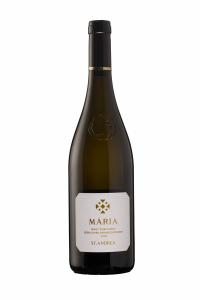

 Hungary
White Wine
Brand
Hungary
White Wine
Brand
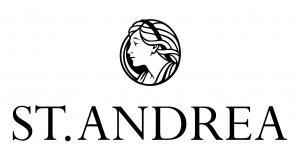
The blend of Furmint and Chardonnay, coming from the emblematic Nagy – Eged – hill vineyard. Wine was fermented and aged in barrel for 14 months. Full bodied, rounded, complex wine of a very hot year, coming from sea sedimental limestone. Ripe tropical fruits, vanilla and briosh on the nose complemented by the aromas oaky and mineral notes. Very tasty with tropical fruits on the palate. Nice mineral finish, great potential.

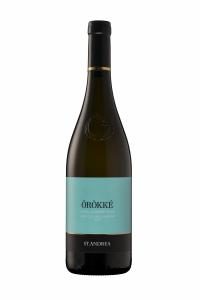

 Hungary
White Wine
Brand
Hungary
White Wine
Brand

A nice terroir blended wine from Eger. Rich tropical fruits on the nose such as pineapple, mango and citrus fruits complemented by mediterranean herbs. Very complex on the palate. An elegant, ripe, exciting white wine with mineral finish.

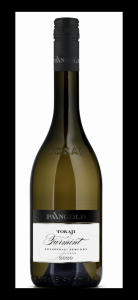

 Hungary
White Wine
Brand
Hungary
White Wine
Brand

colour: greenish yellow Aroma: A fresh, fruity white wine, green apple, quince and pear on the nose complemented by great minerality. taste: Well balanced structure with rounded however lively acids. Fresh and fruity. Characterisic grape and pear on the palate with nice minerality. Long finish. A real aperif.

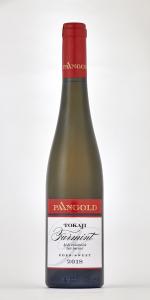

 Hungary
White Wine
Brand
Hungary
White Wine
Brand

COLOUR: Golden AROMA: Intense aroma of fresh grape and dried apricot on the nose. FLAVOUR: Balanced structure, with acidity slightly above moderate intensity complemented by an elegant body. Characterized by dried apricot, honey and quince on the palate, accompanied by minerality. A wine with great sugar – alcohol – acidity balance. Very long finish. Residual sugar: 117,6 g/l

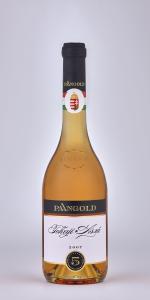

 Hungary
White Wine
Brand
Hungary
White Wine
Brand

During wine production we combine tradition with modern technology. During Aszu production the „mother – son” grape is harvested from the same vineyard. We use must from the same grape where the shrivelled and botrytised berries are coming from. All aszú wines are terroir wines. First we produce the must then with a special crusher we finely torn the skin of the aszu berries – during procedure the seeds do not crushed – . 24 hours maceration, then taking all the seeds with a filter from the top. Controlled fermentation in stainless steel tank. After fining and filtering 2 weeks slow fermentation in barrel. We age the wine in 25-30 years old 250 litre barrels for 11 years. Every year we take off wine from the barrel, wash them and put them back until bottling.
COLOUR: Medium amber
AROMA: Intense, evolving aroma. Opens with strong honey and yellow flowery scents, followed by an ample dried apricot, dried fruit, mandarin, toasted nuts, and a touch of bread crust.
FLAVOUR: The lively, high acidity gives the wine freshness in spite of the copious amount of residual sugar. Compared to the previous wines, the body is clearly fuller, the texture is denser. On the palate, its strong honey flavour is compensated by the tart citrusy notes of high acidity. These are accompanied by mandarin, dried apricot, mango, the toasted nuts of barrel maturation, and stoney minerality. Nice and long finish.
Alcohol: 11,0 % vol
Residual sugar: 122,4 g/l

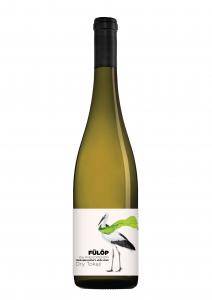

 Hungary
White Wine
Brand
Private Label
Hungary
White Wine
Brand
Private Label
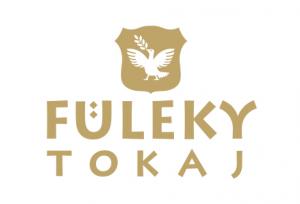
Light straw yellow in colour. Averagely intense nose shows the intensive and complex nature of Tokaji fresh dry wines. Citrus, crunchy green apple and beautiful floral notes in the nose. Dry to taste, lively fruits with beautiful tense acids. Medium intense sip with refreshing finish that invites you to the next taste. Outstanding blend of Furmint-Hárslevelű-Sárgamuskotály in which the varieties support each other. A superbly fresh wine from a hot vintage that will retain its dynamism for a long time.
Fülöp the Stork was born in Spain in the Ebro river valley in 2003. We do not know if he ever left Europe, but it is certain that he had been living in and around Bodrogkeresztúr since 2006. He brought up 34 fledglings; his partner always migrated, but he stayed. In winter he warmed himself on chimneys, drank water from the River Bodrog, hunted for voles and was lord of all the stork nests in the area.
We bottled this fresh and crisp Tokaji in memory of our phenomenal stork who was the stork of the neighbourhood and everyone for 15 years.
From the income, we are supporting maintenance of stork nests in and near Bodrogkeresztúr, creation of stork nest stands and electric insulation to protect birds.
Food-wine pairing:
(Csaba Harmath, gastronomic expert)

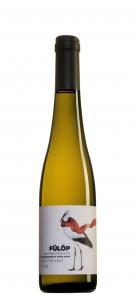

 Hungary
White Wine
Brand
Private Label
Hungary
White Wine
Brand
Private Label

Fülöp the Stork was born in Spain in the Ebro river valley in 2003. We do not know if he ever left Europe, but it is certain that he has been living in and around Bodrogkeresztúr since 2006. He has brought up 34 fledglings; his partner always migrated, but he stayed. In winter he warms himself on chimneys, drinks water from the River Bodrog, hunts for voles and is lord of all the stork nests in the area.
We bottled this late harvest Tokaji in memory of our phenomenal stork who was the stork of the neighbourhood and everyone for 15 years.
From the income, we are supporting maintenance of stork nests in and near Bodrogkeresztúr, creation of stork nest stands and electric insulation to protect birds.
Food-wine pairing:
(Csaba Harmath, gastronomic expert)



 Hungary
White Wine
Brand
Hungary
White Wine
Brand

Estate wine blended across our finest vineyards. Light straw yellow. Ripe fruits, juicy peach, fruit compote in the nose. Full and complex flavours with the ripe summer fruits returning in the mouth, beautifully complemented by the subtle, elegant spiciness of the barrel. Long finish made rounded by the couple of grams of natural residual sugar. A complex, broad and serious wine of a hot vintage.
Food pairing:
(Csaba Harmath, gastronomic expert)
Vineyard: Grapes come from our various vineyards: Sajgó in Bodrogkeresztúr village, Mestervölgy in Tarcal village and from the well-known Király in Mád village.
Soil composition:
Bottled: 22nd September 2020
ALCOHOL: 13,5 %VOL RESIDUAL SUGAR: 4,1 G/L ACIDITY: 6,4 G/L



 Hungary
White Wine
Brand
Hungary
White Wine
Brand

A late harvest wine made from overripe, shrivelled and noble grapes with elegant acidity. Flavours typical of wine coming from volcanic soils of Tokaj Wine Region. The aromas develop incredibly quickly with sweet cakes, candy floss and sweets. Harmonious flavours, very ethereal, excellent balance, extremely elegant finish. Elegant, good acids, lovely earthy aromas, mushroom, freshly dried apricot, some vanilla, rounded, good body. Typical beauty and delightfulness of the 2017 vintage.
Serving temperature: 8-10 °C
Food pairing:
(Csaba Harmath, gastronomic expert)
Vineyard: Grapes come from three of our vineyards:
Harvest: September- November 2017
Bottled: 27th September 2019
ALCOHOL: 12,5 %VOL RESIDUAL SUGAR: 99 G/L ACIDITY: 7,29 G/L

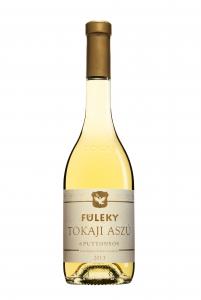

 Hungary
White Wine
Brand
Hungary
White Wine
Brand

* Berliner Wine Trophy 2019: Grand Gold Medal
* Decanter 2019: Silver Medal (94 points)
* Wine of the Year 2019 at the Hungarian Academy of Sciences
We had to wait a long time for this balanced vintage which gave excellent grapes, but in 2013 we were able to make one of the world’s most delicious noble sweet wines once again. Its minerality and complexity make this silky Aszú that is waiting to be discovered of aszú berries selected in three villages in the Tokaj Wine Region: Bodrogkeresztúr, Tokaj and Mád. Candied orange and pistachio in the mouth; sage, clove, basil and dried fig notes in the nose. Its acidity makes the wine fresh and easy to drink, guaranteeing huge aging potential. A worthy accompaniment to weekend family lunches with goose liver, mature cheeses and desserts made of dried fruits or even meat dishes. Chill to 12-14 °C.
Food-wine pairing:
(Csaba Harmath, gastronomic expert)
ALCOHOL: 10 %VOL RESIDUAL SUGAR: 170 G/L ACIDITY: 7,7 G/L

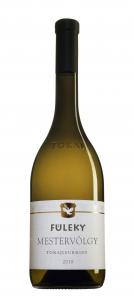

 Hungary
White Wine
Brand
Hungary
White Wine
Brand

The elegance of the nose carries through into the mouth where the refined acids are perfectly ripe yet still bursting with life. Exceptional proportions with finesse and minerality defining the wine. Although it has residual sugar, the acidity keeps it wonderfully dry, full-bodied, deep. Wood is fully integrated, barrel notes, hint of vanilla, like Grandma’s biscuits. Typical barrel-aged Furmint nose. Beautiful long finish with vanilla.
Exceptional proportions with finesse and minerality defining the wine. A beautiful trace of a vintage in which this superbly structured, complex wine was created from wonderfully ripe grapes. We recommend serving at 8-10 °C.
Food-wine pairing:
(Csaba Harmath, gastronomic expert)
Vineyard: Grapes come from our Mestervölgy vineyard in Tarcal village.
Soil: clay with loess
Bedrock: rhyolite tuff
Surface: 0,25 ha
Planted: 1990s
Density: 3500 vines/ha
Exposition: South-South West
Harvest: 26th September 2018
Bottled: 20th September 2019
Bottled quantity: 1555 bottles & 60 magnums
ALCOHOL: 14 %VOL RESIDUAL SUGAR: 6,1 G/L ACIDITY: 7,6 G/L

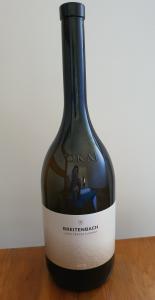

 Hungary
White Wine
Brand
Hungary
White Wine
Brand
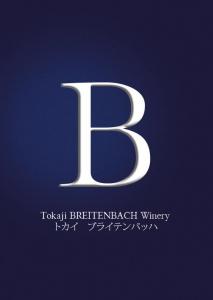
Dry withe Wine
Acidity: 7,2 g/l
Sugar: 10 g/l
Alk.: 13,5 %



 Hungary
White Wine
Brand
Hungary
White Wine
Brand

Dry withe Wine
Acidity: 5,2 g/l
Sugar: 2,3 g/l
Alk.: 11,5 %

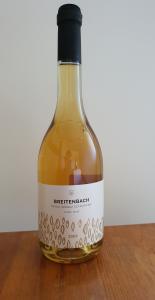

 Hungary
White Wine
Brand
Hungary
White Wine
Brand

Dry withe Wine
Acidity: 7 g/l
Sugar: 7 g/l
Alk.: 13 %



 Hungary
White Wine
Brand
Hungary
White Wine
Brand

Sweet withe Wine
Acidity: 8,5 g/l
Sugar: 188 g/l
Alk.: 11,5 %

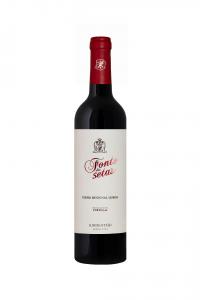

 Portugal
Red Wine
Brand
Private Label
Portugal
Red Wine
Brand
Private Label
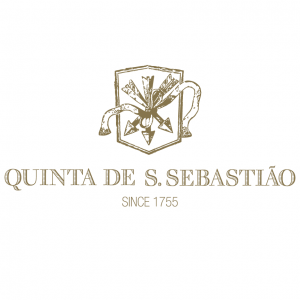
With garnet-coloured, this wine shows intense aromas of red berries, punctuated with chocolate notes. The palate, reveals harmony between the ripe fruit and the well-integrated tannins. The end is easy and elegant.

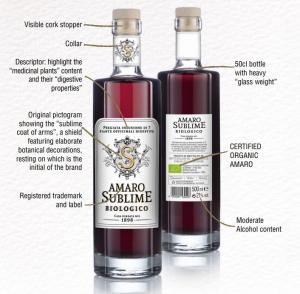

 Italy
Plant Based Spirits
Brand
Private Label
Italy
Plant Based Spirits
Brand
Private Label
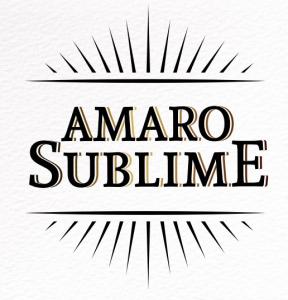
Amaro Sublime 500 ml
AN ITALIAN, 100% ORGANIC, CONTEMPORARY AMARO WITH VERY LONG TRADITION.
The formula derives from a 132-year Italian liqueur-making tradition. The manufacturer, Distilleria Brotto since 1898, has modified a traditional home-made recipe, using certified organic Italian medicinal herbs with proven digestive properties. It is these seven medicinal herbs that create the distinctive flavour. Amaro Sublime Biologico is not only an excellent after-dinner drink, perhaps enjoyed ice-cold with a twist of lemon; it also makes a great aperitif or a perfect ingredient for cocktails.
organic - low alcohol - craft - 7 medicinal plants - Italian Heritage - 132-year Italian liqueur making tradition.

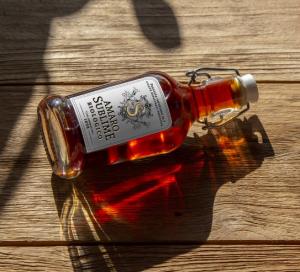

 Italy
Plant Based Spirits
Brand
Private Label
Italy
Plant Based Spirits
Brand
Private Label

Amaro Sublime 200 ml
AN ITALIAN, 100% ORGANIC, CONTEMPORARY AMARO WITH VERY LONG TRADITION.
The formula derives from a 132-year Italian liqueur-making tradition. The manufacturer, Distilleria Brotto since 1898, has modified a traditional home-made recipe, using certified organic Italian medicinal herbs with proven digestive properties. It is these seven medicinal herbs that create the distinctive flavour. Amaro Sublime Biologico is not only an excellent after-dinner drink, perhaps enjoyed ice-cold with a twist of lemon; it also makes a great aperitif or a perfect ingredient for cocktails.
organic - low alcohol - craft - 7 medicinal plants - Italian Heritage - 132-year Italian liqueur making tradition.

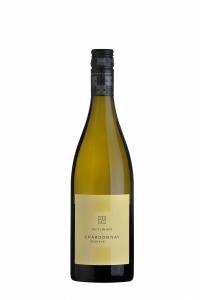

 Germany
White Wine
Brand
Germany
White Wine
Brand

The grapes come from young, organically farmed grand cru and premier cru vineyards. Clearly reduced use of wood, slight reduction, a taut and drinkable acidity as well as a surprisingly dense structure for the youthfulness of the vines, are guarantors for a perfect addition to the Heitlinger range. Placed just below the GG's, they stylistically represent a distinctive and very individual line.
Aromas of white and yellow flowers, slightly fragrant, pear, chalky minerality, macaroons, dried grass, juicy, citrus, lime, exotic, slight saltiness.

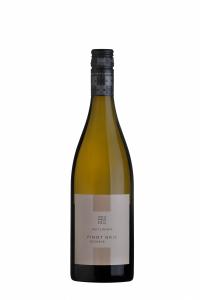

 Germany
White Wine
Brand
Germany
White Wine
Brand

The grapes come from young, organically farmed grand cru and premier cru vineyards. Clearly reduced use of wood, slight reduction, a taut and drinkable acidity as well as a surprisingly dense structure for the youthfulness of the vines, are guarantors for a perfect addition to the Heitlinger range. Placed just below the GG's, they stylistically represent a distinctive and very individual line.
Aromas of quince, clove, bay leaf, gingerbread spice, ripe pear, roses. Pear, apricot, caramel, roasted nuts. Spicy, ripe dried fruit, toasted white bread, apricot strudel.

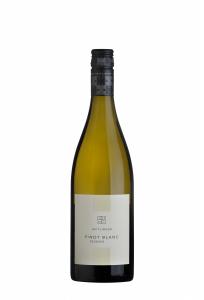

 Germany
White Wine
Brand
Germany
White Wine
Brand

The grapes come from young, organically farmed vineyards of Great and First sites. Clearly reduced use of wood, slight reduction, a taut and drinkable acidity as well as a surprisingly dense structure for the youthfulness of the vines, are guarantors for a perfect addition to the Heitlinger range. Placed just below the GG's, they stylistically represent a distinctive and very individual line.
Aromas of yellow fruits, ginger, dried apricots, quince, yellow apple, exotic, star fruit, guava. Slightly salty minerality.
Translated with www.DeepL.com/Translator (free version)

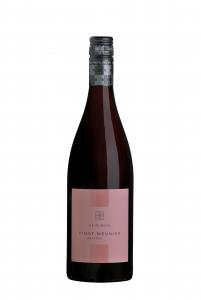

 Germany
Red Wine
Brand
Germany
Red Wine
Brand

The grapes come from young, organically farmed vineyards of Great and First sites. Clearly reduced use of wood, slight reduction, a taut and drinkable acidity as well as a surprisingly dense structure for the youthfulness of the vines, are guarantors for a perfect addition to the Heitlinger range. Placed just below the GG's, they stylistically represent a distinctive and very individual line. An unique taste experience of wild cherry and red currants, elegant wood, juicy, berry, velvety tannin, very persistent, pleasant fresh acidity, terroir driven.

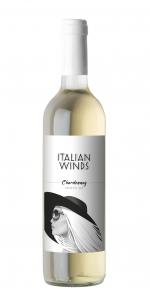

 Italy
White Wine
Brand
Italy
White Wine
Brand

100% Chardonnay - Veneto IGT

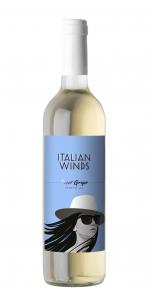

 Italy
White Wine
Brand
Italy
White Wine
Brand

100% Pinot Grigio delle Venezie DOC

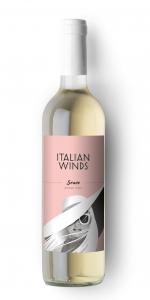

 Italy
White Wine
Brand
Italy
White Wine
Brand

100% SOAVE DOC



 Italy
Ale Beers
Brand
Private Label
Italy
Ale Beers
Brand
Private Label

Beer with gluten content below than 20ppm, specifically formulated for gluten intolerant people (Reg. UE 828/2014).
Pure malt ale, gluten free, brewed with both barley and wheat malts. Ma.Ma Gluten Free has a fresh taste, is slightly fruity and bitter, with a thick, creamy and adherent head. Unfiltered, unpasteurized, top-fermented and second fermentation in the bottle.
Ingredients: water of Gualdo Tadino, barley and wheat malt, yeasts and hops.
"Ronaldinho" Beer of the Champions goes perfectly with salads and light appetizers. She is a worthy substitute, during happy hour, of prosecco.



 Italy
Ale Beers
Brand
Private Label
Italy
Ale Beers
Brand
Private Label

Pure malt ale, brewed with 100% barley malt, has a defined bitterness and a herbaceous aftertaste due to the use of selected hops. Its head is thick, creamy and adherent. unfiltered, unpasteurized, top-fermented and second fermentation in the bottle. Unfiltered, unpasteurized, top-fermented and second fermentation in the bottle.
Ingredients: water of Gualdo Tadino, barley malt, yeasts and hops.
"Roberto Carlos" Beer of the Champions is ideal paired with risottos, main courses of white meat, chicken and game and grilled vegetables.



 Italy
Ale Beers
Brand
Private Label
Italy
Ale Beers
Brand
Private Label

Pure malt ale, brewed with both barley and wheat malts. Ma.Ma Weiss has a fresh taste, a low bitterness and is slightly acid, with a thick, creamy and adherent head. Unfiltered, unpasteurized, top-fermented and second fermentation in the bottle.
Ingredients: water of Gualdo Tadino, barley and wheat malt, yeasts and hops.
"Sneijder" Beer of the Champions is excellent with white meats, cured meats, fresh and aged cheeses. To try in the aperitifs.



 Italy
Ale Beers
Brand
Private Label
Italy
Ale Beers
Brand
Private Label

Pure malt ale, brewed with both barley and wheat malts. Bianca Lancia has a fresh taste, a low bitterness and is slightly acid, with a thick, creamy and adherent head. Unfiltered, unpasteurized, top-fermented and second fermentation in the bottle.
Ingredients: water of Gualdo Tadino, barley and wheat malt, yeasts and hops, coriander, bitter orange peels.
The fresh taste and the slightly acidic notes of Bianca Lancia pairs in a balanced way with both fish dishes and made of light dressed pasta. "Matrix" Beer of the Champions is also an excellent combination for white meats, cured meats, fresh, seasoned cheeses and also an interesting pairing to have an aperitif.

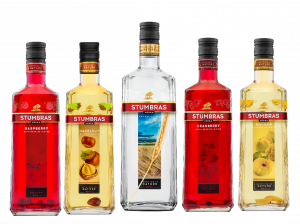


•Brand No.1 Lithuanian vodka brand in the world 2021.
•Rapid growth in export markets
•Brand No. 2 in imported vodka segment in Poland vodka market** (3rd vodka market in the world**), surpassing Absolut vodka.
•Brand has 60 international awards worldwide for taste, design and advertising
•Brand is sold in 33 countries in 2021***
•Annual 2021 production of Stumbras Vodka 7.1 million liters or 13.3 million bottles***




MIX is a dynamic and colourful youth brand of ready to drink cocktail
Notable for:
•Leading RTD brand in Lithuania with 27,2% SOM 2021 (according to Nielsen data)
•Export accounts for 52% of vol sold
•2021 exported to 15 countries in 4 continents



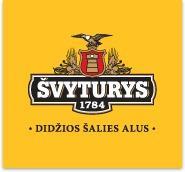
Švyturys Ekstra (European Export Lager, 5.2%) was
launched back in 1995 and became a real sensation. Due to its well-balanced taste, freshness and high drinkability, it shortly became the most popular beer in Lithuania. Later, Ekstra has claimed international recognition and a variety of medals in international beer championships and exhibitions. It has been brewed in Klaipėda brewery with respect to a uniform recipe. Ekstra is known for its bright white head, glaring golden colour, harmonious taste with a hint of hops tart finish. Švyturys Ekstra is the standard of the Lithuanian, full-taste lager.
Švyturys Ekstra is bottled in modern-shape glass bottles, cans and kegs for bars. It is the most popular beer on the tap in Lithuanian bars and restaurants. Švyturys Ekstra is served as unpasteurised “live” beer.




Švyturys Baltas (German Hefeweizen, 5%) is a member of the Švyturys Traditional Collection. It represents the wheat beer production traditions in the region. The dark yellow turbidity of the beer fits well with a glaring white head. It has a fresh taste and aroma, which reminds a bouquet made of cloves, bananas, plums, orange peels and exotic fruits. Its taste reveals the flavour of a citrus fruit, banana and bread with a slightly tart finish. In Lithuania, it is popular to drink this beer from a chilled glass with a slice of lemon.

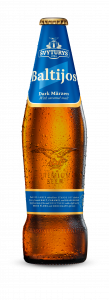


Švyturys Baltijos (Oktoberfest/Märzen, 5.8%) is Klaipėda brewery beer that is the closest to the historic one produced in the Klaipėda/ Memel region. It is distinguished by its dark red amber colour with a prominent fruit aroma formed by the caramel malt. The beer has a sweetish, rich, long-lasting caramel taste with well-balanced sweetness and “hidden” strength.

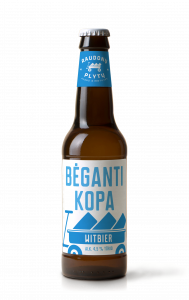

CRAFT BEERS.
"KETURI VEJAI" (German Ale, Kolsch, 4.9%) is a light and slightly hoppy beer, typical of the Cologne region. It’s fruity and mildly bitter aroma comes from “Mosaic” and “Hallertau Hersbrucker” hops.
"BOSUN'S MOUSTACHE" (American IPA, 6.0%) is characterized by bitter but fruity taste and aroma. The bitterness of the beer is given by using a lot of American Cascade, Citra, Centennial, and Chinook hops.
"RUNNING DUNE" (Witbier, 4.5%) is our improvisation on the topic of Belgian wheat beer. This beer is made of wheat and barley malt, adding coriander seeds, sweet orange peels and cardamom seeds.
Bosun’s Moustache (American IPA, 6.0%) is characterized by bitter but fruity taste and aroma. The bitterness of the beer is given by using a lot of American Cascade, Citra, Centennial, and Chinook hops.
"NAKED SEAL"( Pale Ale, 5.8%) - a light ale, that we ferment with wine yeast; as a result, the beer is virtually devoid of bitterness, and the wine-like dryness and light acidic tone resemble cider or white win notes, making the beer all the more summery.




"KISS" is the cider produced with real juice. We do not use fermented juice, but add the additional juice during our production process to guarantee excellent taste. Kiss is No. 1 by sales in Lithuania. (Nielsen, 06/2015).
Kiss includes one of the most popular pear ciders in Lithuania (Pear Taste). There are also Wild Strawberry Taste and Cherry Taste. Kiss ciders are delivered in convenient PET bottles and cans. All of them are 4.5% strong.

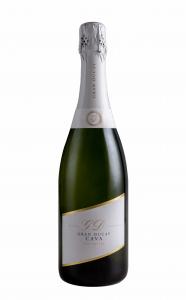

 Spain
Cava
Brand
Private Label
Spain
Cava
Brand
Private Label
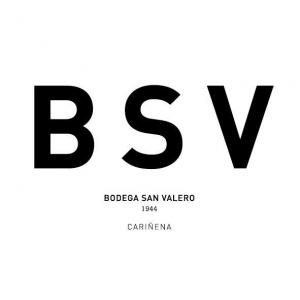
Gran Ducay is a line of Cavas Brut Nature, Brut and Rose. varieties: Macabeo, Parellada,Xarel lo. Cava Rose: red garnacha.
DO CAVA.

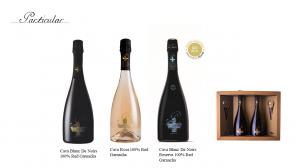

 Spain
Cava
Brand
Spain
Cava
Brand

Line of Cavas made with 100% red grenache. DO CAVA
Cava Particular Blanc De Noirs
Cava Particular Blanc De Noirs Reserva
Cava Particular Blanc De Noirs Rose

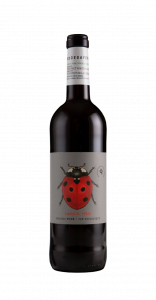

 Spain
Red Wine
Brand
Private Label
Spain
Red Wine
Brand
Private Label

Garnacha/Syrah organic wine. 92pt at International Organic Wines Awards.



 Spain
White Wine
Brand
Private Label
Spain
White Wine
Brand
Private Label

100% Macabeo organic wine.
92pt at International Organic Wines Awards.

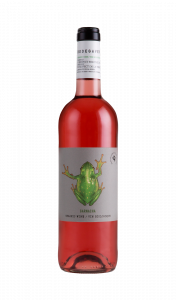

 Spain
Rose Wine
Brand
Private Label
Spain
Rose Wine
Brand
Private Label

100% garnacha organic wine.

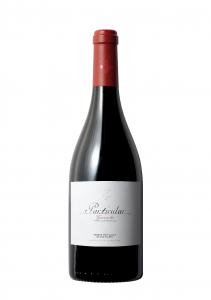

 Spain
Red Wine
Brand
Spain
Red Wine
Brand

100% Garnacha which comes from centenarian vines (+100 years old). Manual harverst. 12 months in french oak barrel.
92pt Guía Peñín, Gold medal at Concours Mondial de Bruxelles, Gold medal at Grenaches de Monde, Grand Gold medal at Berliner Wein Trophy, Gold medal at Mundus Vini.

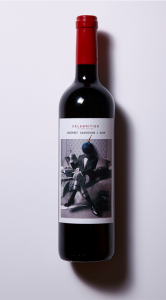

 Spain
Red Wine
Brand
Private Label
Spain
Red Wine
Brand
Private Label

100% Cabernet Sauvignon. Gold medal at Berliner Wein Trophy 2022.
DOP Cariñena.

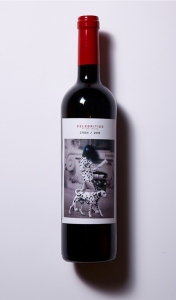

 Spain
Red Wine
Brand
Private Label
Spain
Red Wine
Brand
Private Label

100% Syrah.
DOP Cariñena.

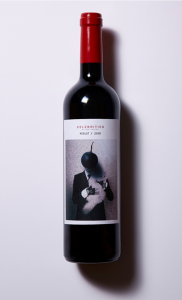

 Spain
Red Wine
Brand
Private Label
Spain
Red Wine
Brand
Private Label

100% Merlot. Gold medal at Berliner Wein Trophy 2022.
DOP Cariñena.

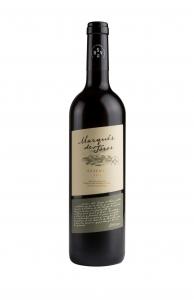

 Spain
Red Wine
Brand
Spain
Red Wine
Brand

100% Tempranillo. Maceración y fermentación en depósitos de acero inoxidable durante 10 días a temperatura controlada de 26-28ºC. 12 en barrica de roble americano y posterior reposo en botella.
Gold Medal at Mundus Vini.
DOP Cariñena.

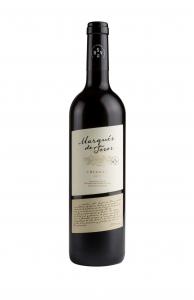

 Spain
Red Wine
Brand
Spain
Red Wine
Brand

Tempranillo, Cabernet Sauvignon. Maceration and fermentation in stainless steel tanks for 10 days at a controlled temperature of 26-28 ºC. Ageing in American oak barrels for a minimum of 6 months.
Gold Medal at Mundus Vini.
DOP Cariñena.

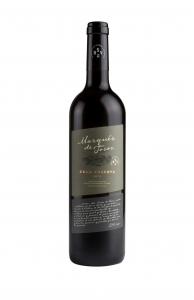

 Spain
Red Wine
Brand
Spain
Red Wine
Brand

Tempranillo, Cabernet Sauvignon, Garnacha. Maceration and fermentation in stainless steel tanks for 10 days at a controlled temperature of 26-28 ºC. At least 18 months in oak barrels before being left to rest in the bottle. The personality of this wine is maintained by not subjecting it to the cold stabilisation process. Consequently, there may be some sediment, this being symptomatic of a natural product.
Gold Medal at Mundus Vini.
DOP Cariñena.



 Finland
Vodka
Brand
Finland
Vodka
Brand


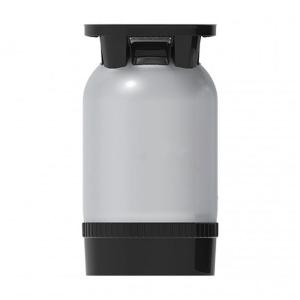

 Italy
Ale Beers
Brand
Private Label
Italy
Ale Beers
Brand
Private Label

Pure malt ale, brewed with 100% barley malt. Costanza has a fresh taste, is slightly fruity and bitter, with a thick, creamy and adherent head. Unfiltered, unpasteurized, top-fermented and second fermentation in the bottle.
Ingredients: water of Gualdo Tadino, barley malt, hops and yeasts.
Costanza expresses all her characteron the best way when combined with fried fish, roast chicken, goat cheese, not too fatty salami and grilled vegetables.

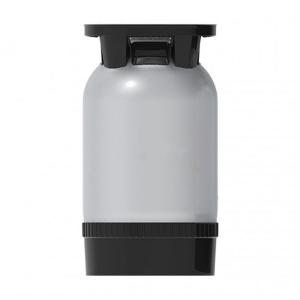

 Italy
Ale Beers
Brand
Private Label
Italy
Ale Beers
Brand
Private Label

Beer with gluten content below than 20ppm, specifically formulated for gluten intolerant people (Reg. UE 828/2014).
Pure malt ale, gluten free, brewed with both barley and wheat malts. Isabella has a fresh taste, is slightly fruity and bitter, with a thick, creamy and adherent head. Unfiltered, unpasteurized, top-fermented and second fermentation in the bottle.
Ingredients: water of Gualdo Tadino, barley and wheat malt, hops and yeasts.
The fruity aroma and the delicacy of Isabella’s taste perfectly matches with salads and appetizers. Isabella is a worthy substitute of the prosecco and an excellent choice as an aperitif.




RAKI IS 100% MADE FROM MUSCAT GRAPES. AND AGING IN OAK BARRELS George's Brandy is distilled from Hamburg Muscat grapes in small copper stills. The traditional method of distillation, the aging in oak barrels that gives an amber color and taste result in the bottling of a recipe of three generations of the Kinolli family.

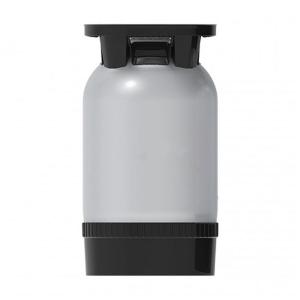

 Italy
Ale Beers
Brand
Private Label
Italy
Ale Beers
Brand
Private Label

Pure malt ale with a fresh taste, pronouncedly bitter. Adelaide is characterized by an excellent drinkability, it is very scented with hints of citrus and fresh hay given by american hops: its head is thick, creamy and adherent. unfiltered, unpasteurized, top-fermented and second fermentation in the bottle.
Ingredients: water of Gualdo Tadino, barley malt, hops (cascade, citra), yeasts.
Thanks to its moderate alcohol content and its distintictivenesses given by the use of American hops, Adelaide well combines with roasts, American ribs, buffalo wings, burgers and chips. The bitter spirit of this beer even perfectly matches with rich salads in particular with those made of white meat.



 Italy
Ale Beers
Brand
Private Label
Italy
Ale Beers
Brand
Private Label

Pure malt ale, brewed with both barley and wheat malts. Bianca Lancia has a fresh taste, a low bitterness and is slightly acid, with a thick, creamy and adherent head. Unfiltered, unpasteurized, top-fermented and second fermentation in the bottle.
Ingredients: water of Gualdo Tadino, barley and wheat malt, yeasts and hops, coriander, bitter orange peels.
The fresh taste and the slightly acidic notes of Bianca Lancia pairs in a balanced way with both fish dishes and made of light dressed pasta. Bianca Lancia is also an excellent combination for white meats, cured meats, fresh, seasoned cheeses and also an interesting pairing to have an aperitif.

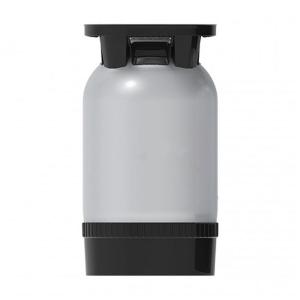

 Italy
Ale Beers
Brand
Private Label
Italy
Ale Beers
Brand
Private Label

Pure malt ale, brewed with both barley and wheat malts. Margherita has a fresh, smooth, full-rounded aftertaste, a low bitterness and is slightly acid, with a thick, creamy and adherent head. Unfiltered, unpasteurized, top-fermented and second fermentation in the bottle.
Ingredients: water of Gualdo Tadino, barley and wheat malt, hops and yeasts.
Margherita’s elegant notes are exalted when pairing with fatty meats like pork, sausages and salami. Blue cheeses and especially pizza enhance her taste in the best way.

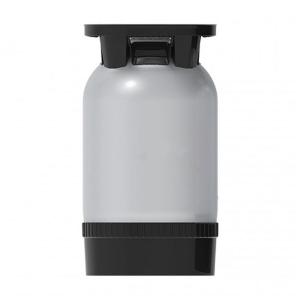

 Italy
Ale Beers
Brand
Private Label
Italy
Ale Beers
Brand
Private Label

Pure malt ale, brewed with 100% barley malt. Federico II has a fresh taste, is rather bitter and has a herbaceous aftertaste due to the use of selected hops. Its head is thick, creamy and adherent. Unfiltered, unpasteurized, top-fermented and second fermentation in the bottle.
Ingredients: water of Gualdo Tadino, barley malt, hops and yeasts.
Federico II is a very refreshing beer, excellent with cured meats, roast ribs, grilled lamb and blue cheeses. Federico II is a full-meal beer, which enhances its herbaceous aftertaste with both delicate and strong main courses but also with second courses based on white meats and fishes.



 Italy
Ale Beers
Brand
Private Label
Italy
Ale Beers
Brand
Private Label

Pure malt ale, brewed with 100% barley malt. Federico II Extra has a defined bitterness and a herbaceous aftertaste due to the use of selected hops and dry hopping. Its head is thick, creamy and adherent. unfiltered, unpasteurized, top-fermented and second fermentation in the bottle.
Ingredients: water of Gualdo Tadino, barley malt, yeasts and hops (cascade, chinook).
The bitterness and the aromatic notes of the Federico II Extra blend together in a lovely contrast of flavours if accompanied by grilled meats, dried fruit and seasoned cheeses because they well enhance its decisive soul. Federico II Extra proves to be an ideal pairing with desserts such as cheesecake, crème brûlée or carrot cake.

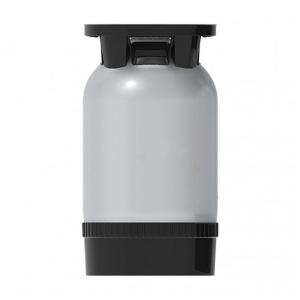

 Italy
Ale Beers
Brand
Private Label
Italy
Ale Beers
Brand
Private Label

Pure malt amber ale, brewed with 100% barley malt. Bastola is a dry beer with an intense taste and a slight bitterness, furthermore it has an aftertaste of caramel and hazelnut due to the use of special malts. Its head is thick, creamy and adherent. Unfiltered, unpasteurized, top-fermented and second fermentation in the bottle.
Ingredients: water of Gualdo Tadino, barley malt, hops, yeasts, sugar cane.
The dry and slightly bitter taste of Bastola matches with tasty pasta and risotto dishes, red and game meat. Bastola is also a good match for chocolate desserts.

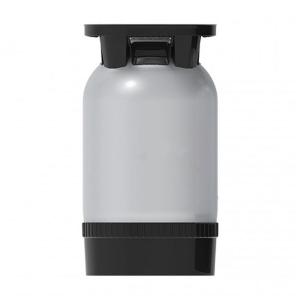

 Italy
Ale Beers
Brand
Private Label
Italy
Ale Beers
Brand
Private Label

Pure malt ale, brewed with 100% barley malt. Anais has an important aromatic profile, smoked notes, intense taste, dry, slightly bitter and with a caramel and hazelnut aftertaste due to the use of special malts. Its head is compact, creamy and adherent foam. Unfiltered, unpasteurized, top-fermented and second fermentation in the bottle.
Ingredients: water of Gualdo Tadino, barley malt, hops and yeasts.
The ideal food pairing for the smoked beer Anais is with seasoned, intense and pungent cheeses, smoked fish and as the German tradition enlightens a smoked beer pairs well with pork shank.



 Italy
Ale Beers
Brand
Private Label
Italy
Ale Beers
Brand
Private Label

Pure malt ale, brewed with 100% barley malt. Enfant Blonde has a fresh taste, is slightly fruity and bitter, with a thick, creamy and adherent head. Unfiltered, unpasteurized, top-fermented and second fermentation in the bottle.
Ingredients: water of Gualdo Tadino, barley malt, yeasts and hops.
Enfant Blonde expresses to the maximum its characteristics in combination with the pizza or with appetizers and delicate cheeses. To try with meat or fish raw.



 Italy
Ale Beers
Brand
Private Label
Italy
Ale Beers
Brand
Private Label

Pure malt ale, brewed with 100% barley malt, has a defined bitterness and a herbaceous aftertaste due to the use of selected hops. Its head is thick, creamy and adherent. unfiltered, unpasteurized, top-fermented and second fermentation in the bottle. Unfiltered, unpasteurized, top-fermented and second fermentation in the bottle.
Ingredients: water of Gualdo Tadino, barley malt, yeasts and hops.
Enfant Ipa is ideal paired with risottos, main courses of white meat, chicken and game and grilled vegetables.

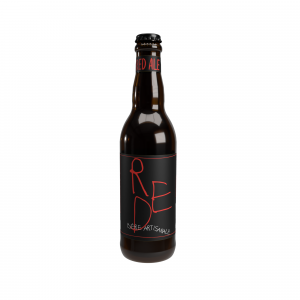

 Italy
Ale Beers
Brand
Private Label
Italy
Ale Beers
Brand
Private Label

Pure malt amber ale, brewed with 100% barley malt. Dry beer with an intense taste and a slight bitterness, furthermore it has an aftertaste of caramel. Its head is thick, creamy and adherent. Unfiltered, unpasteurized, top-fermented and second fermentation in the bottle.
Ingredients: water of Gualdo Tadino, barley malt, yeasts and hops.
Enfant Red is perfect with main courses of meat, cured meats and aged cheeses.

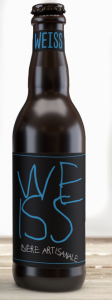

 Italy
Ale Beers
Brand
Private Label
Italy
Ale Beers
Brand
Private Label

Pure malt ale, brewed with both barley and wheat malts. Ma.Ma Weiss has a fresh taste, a low bitterness and is slightly acid, with a thick, creamy and adherent head. Unfiltered, unpasteurized, top-fermented and second fermentation in the bottle.
Ingredients: water of Gualdo Tadino, barley and wheat malt, yeasts and hops.
Ma.Ma Weiss is excellent with white meats, cured meats, fresh and aged cheeses. To try in the aperitifs.

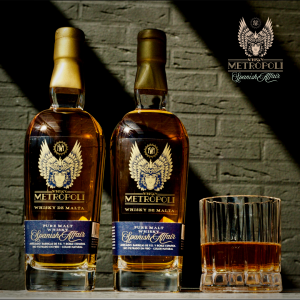

 Spain
Whiskies
Brand
Private Label
Spain
Whiskies
Brand
Private Label

HANDCRAFTED SPANISH SINGLE MALT WHISKY 46%VOL. ALC. AGED EXCLUSIVELY IN RIOJA, PEDRO XIMENEZ AND JEREZ CASKS.
70 CL NATURAL COLOR NO CHILL FILTERED

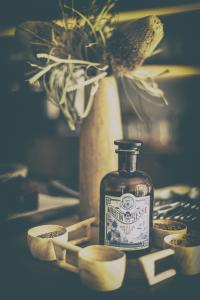

 Spain
Gin
Brand
Private Label
Spain
Gin
Brand
Private Label

Handcrafted London Dry Gin. 100% natural- micro distillery - small bacthes - numbered bottles- Unfiltered.



 Spain
Gin
Brand
Private Label
Spain
Gin
Brand
Private Label

IPA GIN - HANDCRAFTED FROM GRAIN TO BOTTLE . HOP INFUSED.
100% NATURAL - MICRO DISTILLERY -

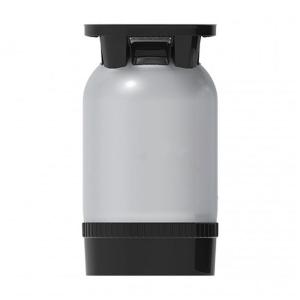

 Italy
Premixed Drinks
Brand
Private Label
Italy
Premixed Drinks
Brand
Private Label

Americano, the quintessential Italian aperitif.
Recipe: bitter campari, vermouth mancino, complete with soda water.
Alc. 12% vol



 Italy
Premixed Drinks
Brand
Private Label
Italy
Premixed Drinks
Brand
Private Label

The combination of vodka, spicy ginger beer, and lime is ideal for year-round drinking.
We recommend drinking it in a copper cup. Copper is very good at conducting temperature, so when an ice cold mule is poured inside, the glass actually takes on that temperature and keeps the drink frosty cold longer.
Alc. 11,1% vol



 Italy
Premixed Drinks
Brand
Private Label
Italy
Premixed Drinks
Brand
Private Label

A gin and tonic is a highball cocktail made with gin and tonic water poured over a large amount of ice.
Alc. 11,1% vol.



 Italy
Premixed Drinks
Brand
Private Label
Italy
Premixed Drinks
Brand
Private Label

A Spritz is a Venetian wine-based cocktail, commonly served as an aperitif in Northeast Italy. It consists of prosecco, digestive bitters and soda water.
Alc. 10,6 % vol.



 Italy
Liqueurs
Brand
Private Label
Italy
Liqueurs
Brand
Private Label

Liquorice liqueur captures the palate with its appealing flavour and intense, assertive aroma, excellent as a digestive at the end of a meal and also suitable for drinking in the evenings in the company of good friends.

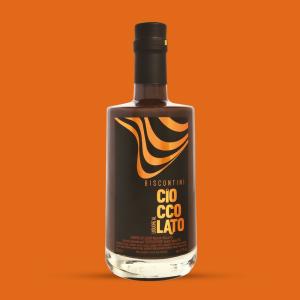

 Italy
Liqueurs
Brand
Private Label
Italy
Liqueurs
Brand
Private Label

Chocolate, creamy, enveloping and inviting, perfect on holidays; with its unmistakable flavour, ideal at the end of a meal, it amplifies its flavour when used in the preparation of desserts.

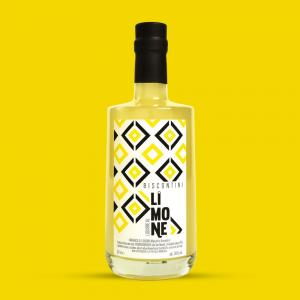

 Italy
Liqueurs
Brand
Private Label
Italy
Liqueurs
Brand
Private Label

Limoncello has a unique and intensely aromatic flavour, and is recommended to be enjoyed cold; widely used in restaurants after lunches and fish dinners. It can be served in shot glasses but also in goblets with a long stem.

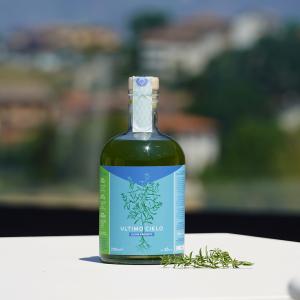

 Italy
Liqueurs
Brand
Private Label
Italy
Liqueurs
Brand
Private Label

For centuries was forbidden to cultivate, harvest and use of Santoreggiato by Franciscan monks because of its known aphrodisiac effects. Today we want to transform this ancient aromatic herb and its forbidden history into an extraordinary elixir. Thanks to its antiseptic, digestive, carminative and expectorant properties, the Santoreggia embellishes and enhances the qualities of this artisanal liqueur.
